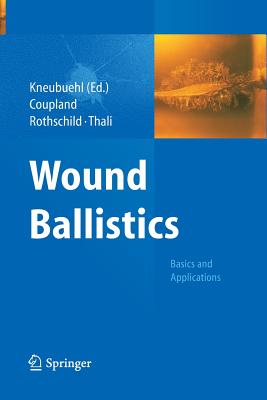
Wound Ballistics: Basics and Applications
Description
The definitive interdisciplinary reference work for wound ballistics
Fundamentals in Physics, arms and ammunition, ballistics
Simulating gunshot wounds: Virtopsy - a virtual autopsy method, combining CT, MRT and surface scanning and Materials that reproduce the interaction of soft tissue, bone and blood vessels with a bullet that penetrates the body.
Wound ballistics for Short-range and long-range weapons, fragments, such as those from bombs and hand grenades, gas jets from blanks, gas weapons, etc., "Non-lethal" weapons as used by the police, in military operations or in urban settings
Specialist knowledge and reference detailed tables: ballistic tables for typical ammunition, ballistic values for numerous types of ammunition, including older types, materials properties, plus additional, hard-to-find data. Most tables are in both metric and U.S. units., an extensive trilingual glossary of specialized terminology in German, English and French
NEW: the latest diagnostic / simulation methods and the latest types of ammunition
The practice and application of wound ballistics in: forensic medicine, surgery - especially emergency and war surgery and international conventions
Globalized conflict zones, terrorism and crime - these issues affect a wider circle than just the armed forces and medical services abroad. Police officers, surgeons, forensics specialists and criminalists also need to be familiar with ballistics and gunshot wounds and must be able to assess the complex factors involved.
The practice and application of wound ballistics in forensic medicine. surgery - especially emergency and war surgery and International conventions.
Globalized conflict zones, terrorism and crime - these issues affect a wider circle than just the armed forces and medical services abroad. Police officers, surgeons, forensics specialists and criminalists also need to be familiar with ballistics andgunshot wounds and must be able to assess the complex factors involved.

